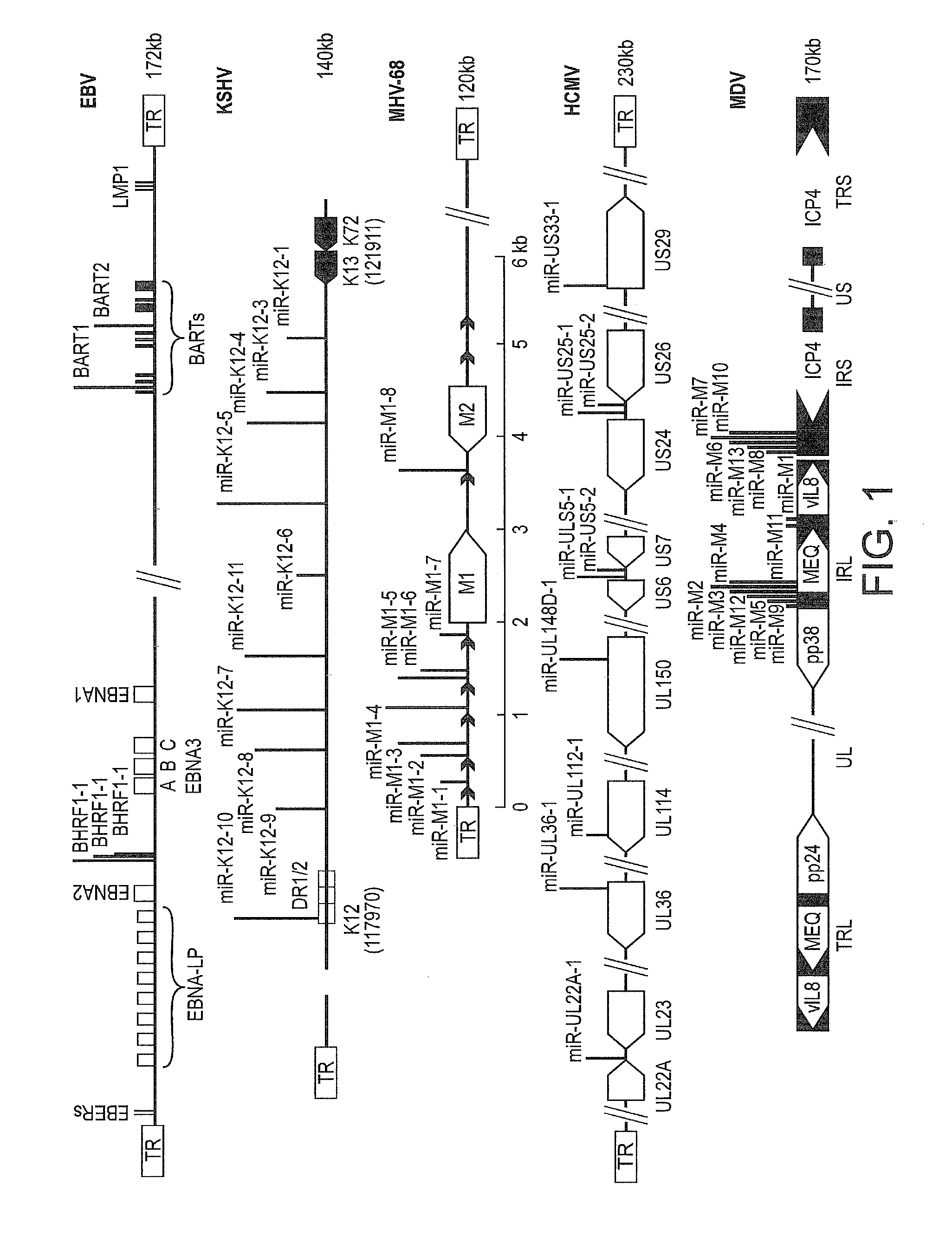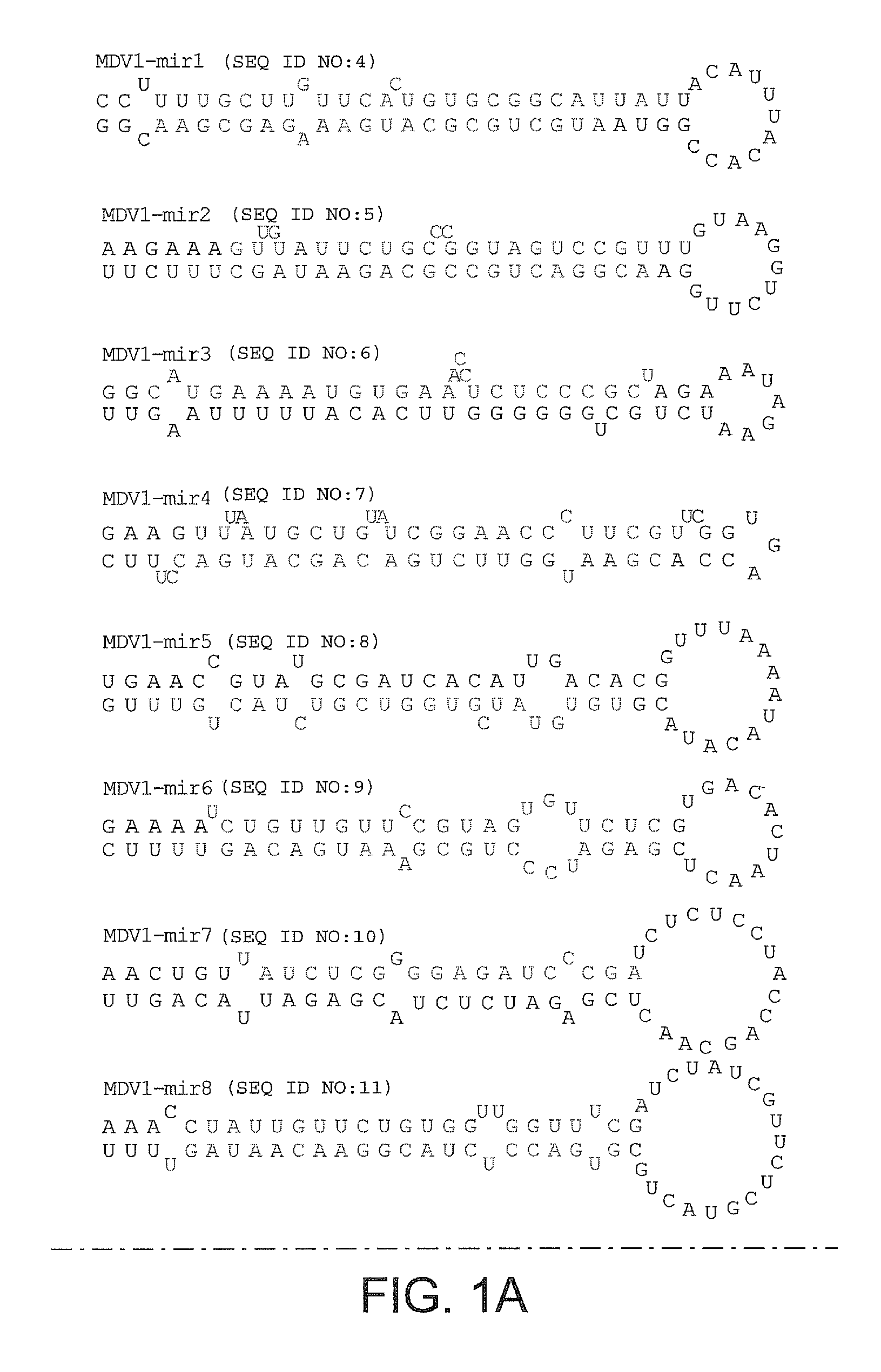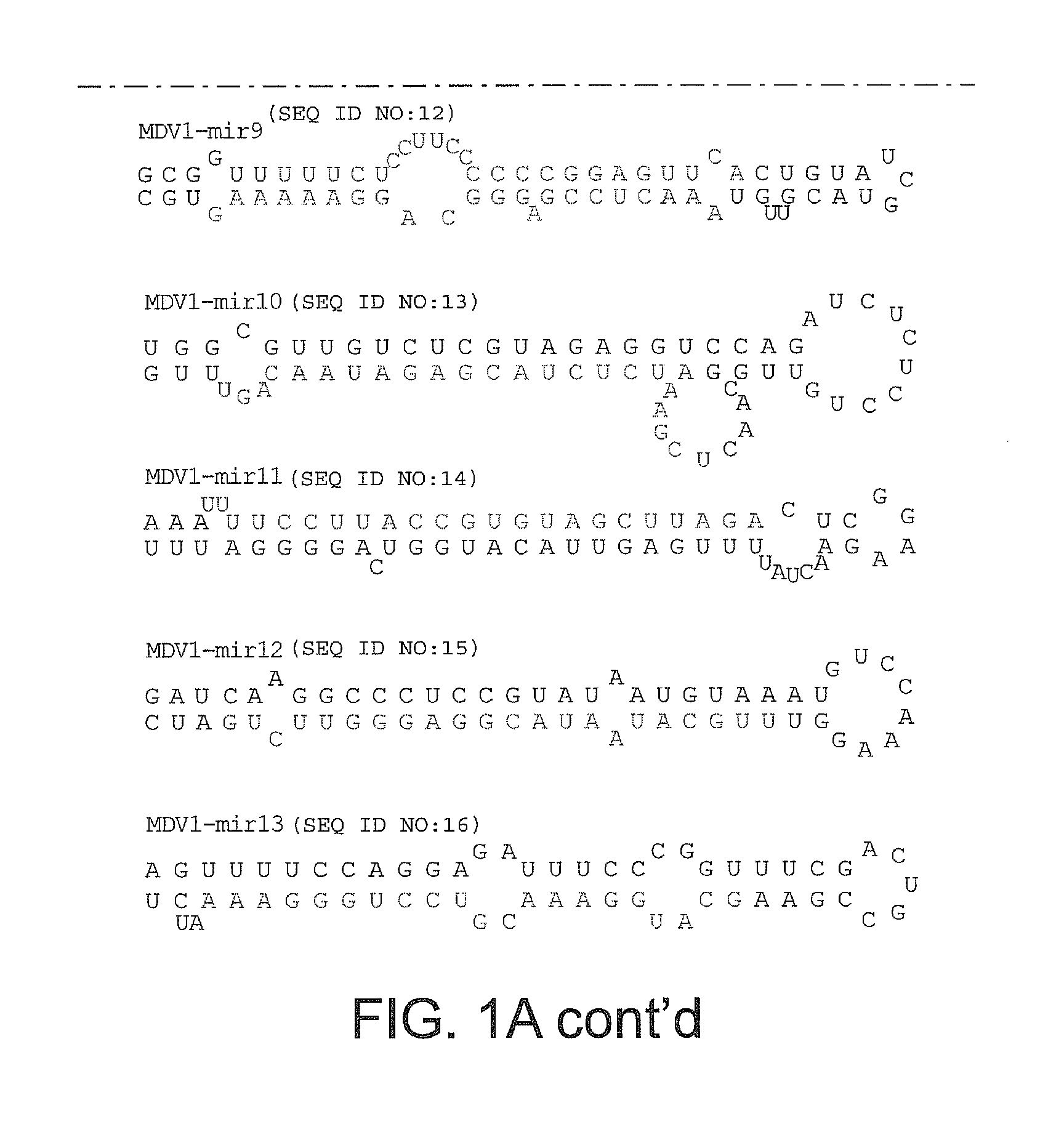Vector
a vector and virus technology, applied in the field of vectors, can solve the problems of affecting the survival rate of the virus, the inability to achieve the same effect in vivo, and the inability to effectively target a small proportion of the virus, and achieve the effect of steady high expression
- Summary
- Abstract
- Description
- Claims
- Application Information
AI Technical Summary
Benefits of technology
Problems solved by technology
Method used
Image
Examples
example 1
Modification of the MDV1-miR-M8-13-6-7-10 Cluster
[0166]Marek's disease virus type 1 (MDV-1) encodes thirteen miRNAs clustered in the MEQ and LAT regions of the viral genome (Yao et al (2008) J. Virol 82:4007-4015). The predicted secondary structures of all thirteen MDV pre-miRNAs are shown in FIG. 1. The genomic location of each miRNA is given in FIG. 2. These include the MDV1-miR-M8-13-6-7-10 cluster located between the ‘a-like’ sequence and the ICP4 within the large intron of the LAT. Of the five miRNAs encoded from this cluster, miR-M13 and miR-M10 are expressed at very low levels. The complete sequence of the cluster with the miRNA sequences are shown in FIG. 3.
[0167]The cluster region is amplified by PCR and cloned into a vector to facilitate manipulation. The MDV-1 miR-M7 microRNA was mutated to modify it into a luciferase siRNA as shown in FIG. 4. Similar mutagenesis was also carried out for miR-M6.
example 2
Silencing of a Reporter Gene
[0168]Mutant clones of MDV were generated by BAC mutagenesis and the silencing effect of the modified miRNAs on expression of Luciferase was tested. A similar procedure was repeated independently for miR-M6. Preliminary results using this modified miR-M7 and miR-M6 have shown that miR-7-hRluc-22 and miR6-hRluc19 constructs are functional in silencing the luciferase reporter gene (FIG. 4A).
Methods
Constructs for the Luciferase Assays with Luciferase Shrna at the Mir-7 Locus
[0169]The synthetic miR-LAT sequence featured two BsmBI restriction sites, each on opposite strands of the DNA, to permit the insertion of annealed DNA oligonucleotides for the replacement of miR-6. For replacement of miR-7, two AarI restriction sites, also on opposing strands of the DNA, were utilised for the insertion of annealed DNA oligonucleotides. The shRNAs constructs are cloned into pEGFP vector to drive the expression from the pCMV promoter.
[0170]Briefly, the miR-LAT-HPC vector w...
PUM
| Property | Measurement | Unit |
|---|---|---|
| length | aaaaa | aaaaa |
| secondary structures | aaaaa | aaaaa |
| structure | aaaaa | aaaaa |
Abstract
Description
Claims
Application Information
 Login to View More
Login to View More - R&D
- Intellectual Property
- Life Sciences
- Materials
- Tech Scout
- Unparalleled Data Quality
- Higher Quality Content
- 60% Fewer Hallucinations
Browse by: Latest US Patents, China's latest patents, Technical Efficacy Thesaurus, Application Domain, Technology Topic, Popular Technical Reports.
© 2025 PatSnap. All rights reserved.Legal|Privacy policy|Modern Slavery Act Transparency Statement|Sitemap|About US| Contact US: help@patsnap.com



